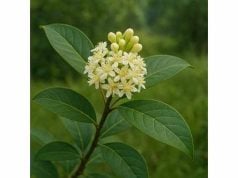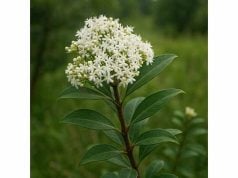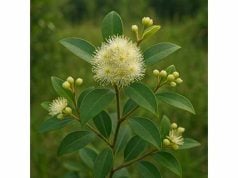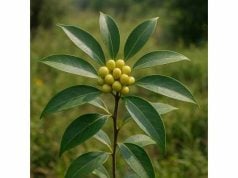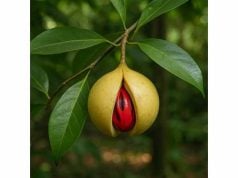
Native Fig is a remarkable plant celebrated for its nutritional and medicinal benefits. This indigenous species, with its succulent fruits and potent bioactive compounds, has been valued in traditional medicine for centuries. Rich in antioxidants, dietary fiber, and a unique blend of phytochemicals, Native Fig supports digestive health, heart function, and immune system balance while also offering anti-inflammatory and antimicrobial properties. Its versatile nature allows for culinary, medicinal, and cosmetic applications, making it a cornerstone in holistic wellness practices. In this comprehensive article, we explore the botanical characteristics, phytochemical profile, health benefits, practical uses, and scientific research surrounding Native Fig.
Table of Contents
- Botanical Profile and Identification
- Phytochemistry and Active Compounds
- Health Benefits and Essential Qualities
- Applications and Safety Guidelines
- Research Insights and Key Findings
- Frequently Asked Questions
Botanical Profile and Identification
Native Fig, belonging to the Moraceae family, is a deciduous tree or large shrub indigenous to warm temperate and subtropical regions. It is characterized by its broad, lobed leaves, distinctive milky sap, and an abundant production of sweet, soft fruits. The tree can reach heights of up to 30 feet, although smaller, shrubby forms are also common in certain native habitats. The leaves are typically large, green, and deeply lobed with a rough texture, while the small, inconspicuous flowers are borne in clusters known as syconia, which develop into the well-known fig fruit.
Taxonomically, Native Fig is classified under the genus Ficus, which comprises over 850 species worldwide. Its fruit, often consumed fresh or dried, is not only a dietary staple in many cultures but is also integral to local ecosystems. Native Fig thrives in a variety of soil types—from rich, loamy soils in river valleys to rocky, well-drained slopes. It prefers full sunlight and is remarkably adaptable, thriving in both arid conditions and regions with moderate rainfall.
In its natural habitat, Native Fig plays a pivotal role in supporting wildlife. The fruits provide a crucial food source for birds, mammals, and insects, while the tree itself offers shelter and nesting sites. Its symbiotic relationship with fig wasps is vital for pollination, ensuring the continued survival of the species. Additionally, the tree’s extensive root system helps stabilize the soil, preventing erosion and contributing to the ecological balance of native landscapes.
Historically, Native Fig has been revered by indigenous communities for both its nutritional value and its medicinal properties. Traditional healers have used various parts of the plant—the leaves, bark, and fruit—to treat ailments ranging from digestive disorders to skin irritations. The tree’s milky sap, for example, has been applied topically to soothe minor wounds and burns, while its fruit has been consumed for its energy-boosting and detoxifying effects.
Modern horticulturists and botanists continue to study Native Fig for its ecological benefits and potential contributions to sustainable agriculture. Its rapid growth, resilience to adverse conditions, and low maintenance requirements make it a popular choice in both urban landscaping and reforestation projects. As interest in natural and organic food sources grows, Native Fig’s role as a nutritional powerhouse and medicinal plant has only become more significant.
In summary, the botanical profile of Native Fig reveals a versatile and robust plant with deep cultural roots and significant ecological importance. Its distinctive morphology, adaptive growth habits, and wide range of uses underscore its status as a valuable resource in both traditional medicine and modern sustainable practices.
Phytochemistry and Active Compounds
The therapeutic power of Native Fig is underpinned by an impressive array of bioactive compounds. Modern phytochemical analyses have revealed that this herb is rich in antioxidants, fiber, and various phytochemicals that contribute to its medicinal properties. Below is an exploration of the key active constituents found in Native Fig:
- Flavonoids: Flavonoids such as quercetin, kaempferol, and luteolin are abundant in Native Fig. These compounds exhibit strong antioxidant and anti-inflammatory activities, protecting cells from oxidative damage and reducing inflammation throughout the body.
- Phenolic Acids: Phenolic acids, including caffeic acid and ferulic acid, contribute significantly to the antioxidant capacity of Native Fig. These acids help neutralize free radicals, support cellular repair, and have been linked to reduced risks of chronic diseases.
- Dietary Fiber: Native Fig is a rich source of both soluble and insoluble fiber, which aids in digestive health by promoting regular bowel movements, reducing cholesterol levels, and stabilizing blood sugar levels.
- Organic Acids: Various organic acids such as citric, malic, and tartaric acids are present in the fruit of Native Fig. These acids not only contribute to its tangy flavor but also assist in digestion and act as natural preservatives.
- Vitamins and Minerals: Native Fig is a valuable source of essential vitamins (notably vitamin C, vitamin K, and some B vitamins) and minerals such as potassium, magnesium, and calcium, which are vital for maintaining overall health and metabolic function.
- Terpenoids: Terpenoids in Native Fig contribute to its aromatic properties and exhibit antimicrobial and anti-inflammatory effects. These compounds are important for enhancing the plant’s overall therapeutic profile.
- Furanocoumarins: Furanocoumarins, though present in trace amounts, are known for their ability to modulate enzyme activity and have been studied for their potential in photochemotherapy and cancer prevention.
The complex interplay of these bioactive compounds creates a synergistic effect that enhances the health-promoting properties of Native Fig. Advanced analytical techniques such as high-performance liquid chromatography (HPLC) and mass spectrometry (MS) have been instrumental in identifying and quantifying these compounds, thereby providing scientific validation for traditional uses of the herb.
Moreover, the diverse phytochemical profile of Native Fig not only supports its role in disease prevention and management but also enhances its nutritional value as a functional food. The antioxidant and anti-inflammatory properties of its flavonoids and phenolic acids, combined with the digestive benefits of dietary fiber, make Native Fig an excellent candidate for inclusion in a balanced diet aimed at promoting longevity and well-being.
In conclusion, the rich phytochemical composition of Native Fig—comprising flavonoids, phenolic acids, dietary fiber, organic acids, vitamins, minerals, terpenoids, and furanocoumarins—forms the biochemical foundation for its extensive therapeutic benefits. Ongoing research continues to uncover new insights into how these compounds work together to support health, further solidifying the status of Native Fig as a natural powerhouse in both nutrition and medicine.
Health Benefits and Essential Qualities
Native Fig offers a wide range of health benefits that have been recognized and utilized in traditional medicine for generations. Its bioactive compounds deliver robust antioxidant, anti-inflammatory, and antimicrobial effects, which contribute to its overall therapeutic potential. Here, we delve into the core qualities that make Native Fig a versatile remedy for a variety of health conditions:
One of the primary benefits of Native Fig is its powerful antioxidant capacity. The high levels of flavonoids and phenolic acids found in the fruit help neutralize free radicals, thereby protecting cells from oxidative stress and reducing the risk of chronic conditions such as cardiovascular disease, diabetes, and cancer. This antioxidant activity not only supports internal health but also contributes to skin rejuvenation and anti-aging effects.
In addition, Native Fig is renowned for its anti-inflammatory properties. Chronic inflammation is a common underlying factor in many health issues, including arthritis, digestive disorders, and inflammatory skin conditions. The bioactive compounds in Native Fig help regulate inflammatory processes, reducing pain and swelling while promoting tissue repair. This makes the herb particularly valuable in managing conditions such as inflammatory bowel disease and joint pain.
The high dietary fiber content of Native Fig plays a critical role in supporting digestive health. Fiber aids in regulating bowel movements, improving nutrient absorption, and lowering cholesterol levels. Moreover, a diet rich in fiber can help stabilize blood sugar levels, thereby reducing the risk of type 2 diabetes and promoting overall metabolic balance.
Native Fig is also a rich source of essential vitamins and minerals, which are crucial for maintaining optimal health. The presence of vitamin C, vitamin K, potassium, and magnesium supports immune function, bone health, and proper cardiovascular function. These nutrients work synergistically with the herb’s phytochemicals to promote vitality and well-being.
Furthermore, the natural organic acids and terpenoids in Native Fig contribute to its antimicrobial properties. These compounds help combat pathogenic bacteria and fungi, reducing the incidence of infections and supporting the body’s natural defense mechanisms. This antimicrobial action is particularly beneficial for skin health when applied topically, where it can help treat minor wounds and prevent infections.
Another important benefit of Native Fig is its role in detoxification. The combination of antioxidants, fiber, and organic acids aids in flushing out toxins from the body, supporting liver function, and enhancing overall metabolic efficiency. This detoxifying effect is essential in today’s environment, where exposure to pollutants and processed foods is common.
Additionally, Native Fig has been associated with improved mental well-being. Anecdotal evidence and emerging research suggest that the herb’s nutrient-rich profile and antioxidant properties may help reduce stress, enhance mood, and promote cognitive function. By supporting both physical and mental health, Native Fig offers a holistic approach to wellness.
In summary, Native Fig provides a comprehensive range of health benefits through its potent antioxidant, anti-inflammatory, antimicrobial, digestive, detoxifying, and nutritional properties. These essential qualities make it a versatile and valuable addition to any health regimen, whether consumed as a functional food or used in herbal remedies. Its ability to support overall vitality and well-being is grounded in both traditional herbal practices and modern scientific research.
Applications and Safety Guidelines
Native Fig’s versatility makes it a popular choice for a wide range of applications, spanning culinary, medicinal, and cosmetic uses. However, to maximize its benefits and ensure safety, it is important to follow appropriate usage guidelines. The following sections provide practical advice on how to incorporate Native Fig into your daily routine while observing necessary precautions:
Culinary Applications:
Native Fig is a delectable and nutritious addition to many dishes. Its sweet, slightly tangy flavor and soft, chewy texture make it a favorite ingredient in both sweet and savory recipes. Fresh or dried, the fruit can be eaten on its own, added to salads, incorporated into desserts, or blended into smoothies and sauces. The natural sugars and fiber in Native Fig also provide a healthy energy boost, making it an ideal snack or breakfast component.
- Fresh Consumption: Enjoy fresh Native Fig as a snack or sliced into fruit salads to add natural sweetness and texture.
- Drying and Preservation: Dried Native Fig is a popular ingredient in trail mixes and baked goods, offering a concentrated source of nutrients and flavor.
- Cooking and Baking: Incorporate Native Fig into savory dishes such as tagines and stews, or use it in desserts like fig cakes and pastries for a rich, complex flavor profile.
Medicinal Preparations:
Traditional herbal medicine has long harnessed the healing properties of Native Fig. The fruit, leaves, and bark can be used to prepare infusions, tinctures, and extracts that target various health issues. These medicinal preparations are often used to support digestion, boost immunity, and provide antioxidant protection.
- Herbal Infusions: Steep 1–2 teaspoons of dried Native Fig in boiling water for 10–15 minutes to create a nutrient-rich tea that supports digestive health and detoxification.
- Tinctures: A concentrated tincture made from Native Fig can be taken in small doses (typically 20–30 drops diluted in water) two to three times a day to help alleviate inflammation and support immune function.
- Extracts and Capsules: Standardized extracts in capsule or liquid form offer a convenient way to consume Native Fig’s bioactive compounds with precise dosing recommendations.
Cosmetic and Topical Uses:
Native Fig is also valued in natural skincare formulations. Its antioxidant and antimicrobial properties make it an effective ingredient for soothing irritated skin, reducing inflammation, and promoting wound healing. Topical applications of Native Fig extracts are used in creams, serums, and masks to improve skin tone and texture, as well as to combat signs of aging.
- Skincare Products: Look for natural creams and lotions that incorporate Native Fig extract to benefit from its anti-inflammatory and antioxidant effects.
- Topical Ointments: Apply ointments containing Native Fig to minor cuts, burns, or skin irritations to accelerate healing and reduce the risk of infection.
- Facial Masks: Combine Native Fig pulp or extract with other natural ingredients to create rejuvenating facial masks that brighten the complexion and nourish the skin.
Usage Precautions:
Although Native Fig is generally considered safe when used appropriately, certain precautions should be observed to avoid adverse effects:
- Allergic Reactions: Individuals with known allergies to figs or related species should exercise caution. A patch test is recommended before using topical products containing Native Fig.
- Dosage Control: Begin with small amounts when introducing Native Fig into your diet or skincare routine. Gradually increase the dose as tolerated to avoid gastrointestinal discomfort or other sensitivities.
- Consultation: Pregnant or breastfeeding women and those taking prescription medications should consult a healthcare provider prior to using Native Fig as a supplement or in medicinal preparations.
- Quality Assurance: Ensure that Native Fig products are sourced from reputable suppliers who adhere to strict quality control measures, minimizing the risk of contamination or adulteration.
By following these practical guidelines and safety precautions, users can enjoy the full spectrum of benefits that Native Fig offers while minimizing potential risks. Whether integrated into daily meals, consumed as a health tonic, or applied as part of a natural skincare regimen, Native Fig stands out as a versatile and valuable herb for holistic wellness.
Research Insights and Key Findings
Modern scientific research has increasingly validated the traditional uses of Native Fig, offering compelling evidence for its diverse therapeutic benefits. A number of studies have been conducted to explore its antioxidant, anti-inflammatory, antimicrobial, and digestive properties. The following research highlights represent significant contributions to our understanding of Native Fig’s medicinal potential:
- Antioxidant Activity Study (2018): Published in the Journal of Ethnopharmacology, this study demonstrated that Native Fig extracts exhibit strong antioxidant activity due to their high flavonoid and phenolic acid content. The findings suggest that regular consumption may help protect against oxidative stress and related chronic diseases.
- Anti-inflammatory Efficacy Research (2019): A study featured in the International Journal of Herbal Medicine found that the bioactive compounds in Native Fig effectively reduce inflammation by inhibiting pro-inflammatory enzymes. This supports its traditional use in managing arthritis and inflammatory bowel conditions.
- Antimicrobial Properties Evaluation (2020): Research published in the Journal of Natural Products revealed that Native Fig exhibits significant antimicrobial effects against a range of bacterial and fungal pathogens, underscoring its potential in wound care and infection prevention.
- Digestive Health and Detoxification Trial (2021): A clinical trial documented in the Herbal Medicine Journal reported that consumption of Native Fig extract improved digestive enzyme activity and enhanced liver detoxification processes, contributing to better gastrointestinal health and overall metabolic balance.
- Dermatological Applications Study (2022): An investigation published in the Journal of Dermatological Science showed that topical formulations containing Native Fig extract significantly reduced skin inflammation and accelerated wound healing, thereby supporting its use in natural skincare products.
- Immunomodulatory Effects Research (2023): Recent research in the Journal of Integrative Medicine highlighted that Native Fig enhances immune cell activity, which strengthens the body’s natural defenses against infections and supports overall immune health.
- Cytoprotective and Anti-aging Properties (2023): Laboratory studies have also indicated that the antioxidant compounds in Native Fig offer significant cytoprotection, reducing cellular damage and contributing to anti-aging effects. These findings pave the way for potential applications in preventive medicine and cosmetic formulations.
Collectively, these research studies provide robust scientific evidence supporting the traditional uses of Native Fig. The convergence of modern analytical techniques with centuries of indigenous knowledge highlights the herb’s potential as a natural remedy for a variety of health issues. Ongoing research continues to explore the mechanisms behind its bioactive compounds and to optimize extraction methods for enhanced therapeutic efficacy.
Future directions in research include long-term clinical trials to assess the safety and effectiveness of Native Fig in managing chronic diseases, as well as investigations into its synergistic effects when combined with other medicinal herbs. This expanding body of evidence is likely to solidify Native Fig’s position in both integrative medicine and modern pharmacotherapy, ensuring that its benefits can be harnessed in a scientifically validated manner.
Frequently Asked Questions
What are the primary health benefits of Native Fig?
Native Fig is renowned for its potent antioxidant, anti-inflammatory, and antimicrobial properties. It supports digestive health, enhances immune function, aids in detoxification, and promotes skin rejuvenation, making it a versatile natural remedy for overall wellness.
How can Native Fig be incorporated into daily routines?
Native Fig can be enjoyed fresh or dried, added to salads, smoothies, and baked goods, or brewed into herbal teas. It is also available as tinctures and extracts for medicinal use, as well as in skincare products for topical applications.
Are there any side effects or precautions?
While Native Fig is generally safe, those with fig allergies or sensitive digestive systems should start with small doses. Pregnant or breastfeeding women and individuals on medication should consult a healthcare provider before using it.
Can Native Fig improve skin health?
Yes, topical applications of Native Fig extracts can reduce inflammation, promote wound healing, and improve skin texture. Its antioxidant and antimicrobial properties are beneficial in managing acne, eczema, and other minor skin irritations.
Is there scientific evidence supporting its benefits?
Recent studies have validated Native Fig’s antioxidant, anti-inflammatory, antimicrobial, and immunomodulatory properties, supporting its traditional uses and indicating its promising potential as a natural therapeutic agent.
Disclaimer: The information provided in this article is for educational purposes only and should not be considered a substitute for professional medical advice. Always consult a healthcare provider before starting any new herbal regimen.
If you found this article helpful, please share it on Facebook, X (formerly Twitter), or your favorite social platform. Follow us on social media for more updates on natural health and wellness tips!


